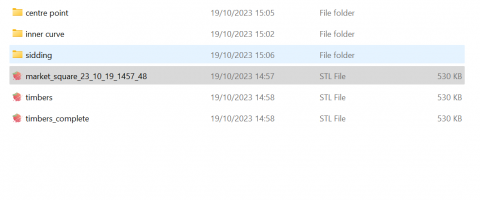- Location
- West of the Severn UK
- Info
@Michael Woods
Hi Michael,
That's a puzzle if you have tried different file names. What sort of STL file is it -- for chairs, loose jaws, timbers, both? How many templates in the file?
What happens if you try creating both DXF and STL:

You will find the STL file in the DXF-FILES folder, not in STL-FILES. You will need to open it manually in 3D Builder for mesh-fixing if you use 3D Builder.
As you can see from the reference to floppy disks, it is many years since I have looked at the error handling in the DXF file functions. I need to have a fresh look at that. But if it has been working fine until now it must be something on your computer rather than in Templot.
But please post your BOX file -- there may be something odd in it which is affecting the STL file. I will see if I can create an STL file here.
cheers,
Martin.
Hi Michael,
That's a puzzle if you have tried different file names. What sort of STL file is it -- for chairs, loose jaws, timbers, both? How many templates in the file?
What happens if you try creating both DXF and STL:
You will find the STL file in the DXF-FILES folder, not in STL-FILES. You will need to open it manually in 3D Builder for mesh-fixing if you use 3D Builder.
As you can see from the reference to floppy disks, it is many years since I have looked at the error handling in the DXF file functions. I need to have a fresh look at that. But if it has been working fine until now it must be something on your computer rather than in Templot.
But please post your BOX file -- there may be something odd in it which is affecting the STL file. I will see if I can create an STL file here.
cheers,
Martin.
message ref: 8480
 Search
Search

